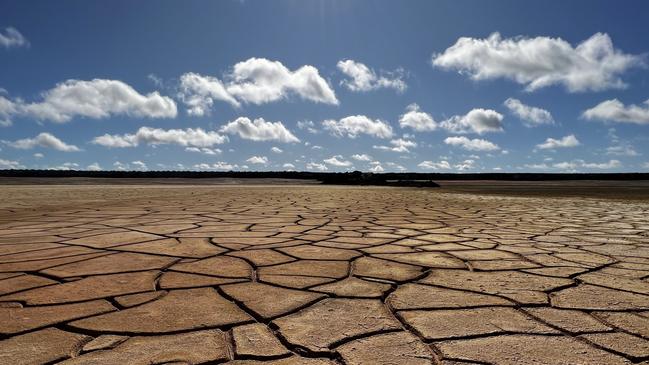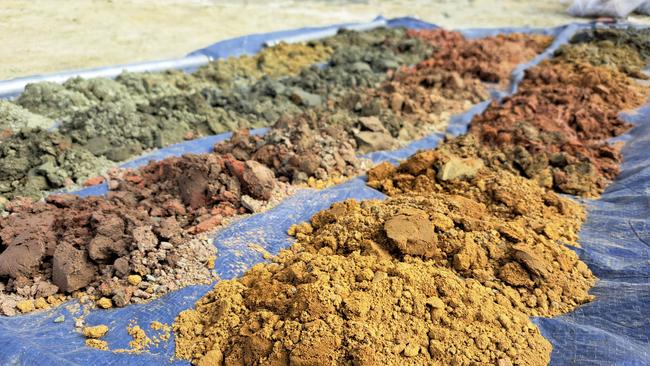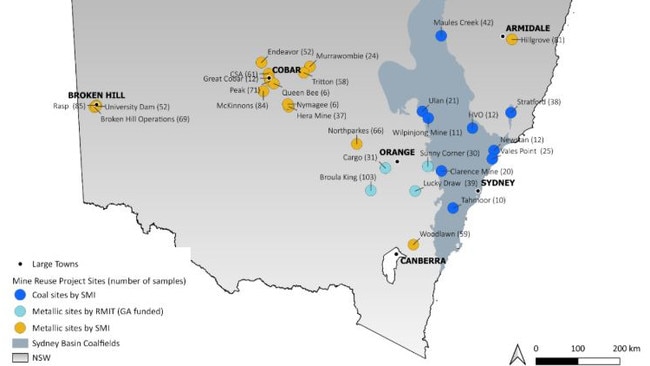Critical minerals, high-tech metals could revive 28 mine sites across NSW
Almost 30 mine sites across NSW could be brought back from the dead or kept open for longer, a new study has found, after key ingredients needed to make renewables including solar, EVs and wind turbines were discovered in old mining waste. See the list.

NSW
Don't miss out on the headlines from NSW. Followed categories will be added to My News.
Almost 30 mine sites across NSW have been given a new lease on life with cutting edge science bringing a new meaning to the old saying that one man’s trash is another man’s treasure.
State government research of current and old mines has found 28 sites where critical minerals and high-tech metals could be hidden among old mining waste.
More than 1,200 samples were collected in the largest study yet from the NSW Mine Reuse Project, unearthing key ingredients needed to build renewables.
Metals essential to making solar panels, wind turbines and batteries were discovered at mine sites across the Central West, Hunter, Northern Tablelands and Broken Hill.
Historic mines including Queen Bee, Endeavour Elura, Hillgrove and four other sites could be brought back from the dead and “recycled” for their precious waste.
While current mines including Peak Gold Mine and Tritton near Cobar, Southern Operations in Broken Hill, and Tahmoor in the Macarthur region could stay open for longer by moving into new minerals, the study found.
Gold and tin were also uncovered in historic tailings at the Mineral Hill and Ardlethan mine sites after waste was reprocessed.

Natural Resources Minister Courtney Houssos said the discoveries could help the state transition to clean energy while supporting mining jobs, with more than 6000 currently employed across the state’s 13 active metal and critical mineral mine sites.
It comes after the International Energy Agency estimated the global economy needs six times the current amount of critical minerals to reach net-zero in the next 20 years.
“As key ingredients in our solar panels, wind turbines, electric vehicles and batteries, critical minerals and high-tech metals are integral to our economic future,” Ms Houssos said.
“We know how important mining is to communities across the state – more exploration means more jobs and more investment in regional NSW.”
In the past the Mine Reuse Project has only looked for gold, but the use of new high-precision chemical testing to identify critical minerals has broken ground.

Elevated concentrations of metals including tellurium, bismuth and antimony were found at 11 sites, alongside minerals such as zinc and manganese.
The data, collected by the Geological Survey of NSW, is used by the industry to help explorers find new mine sites.
The latest findings will be released to help de-risk projects and draw investment to NSW, increasing the 190 minerals exploration titles currently being pursued across the state by identifying opportunities along the new mining frontier.
More than 10 critical minerals and high-tech metals projects are already primed for investment, including ASM’s Dubbo Project searching for rare earth elements and scandium in Nyngan, which the government expects could generate up to 4600 jobs during construction and 2700 ongoing jobs.

NSW Minerals Council chief executive officer Stephen Galilee said the results will put NSW on the high-tech mining map.
“This initiative recognises the ongoing growth in global demand for many of the valuable mineral commodities we have here in NSW,” he said.
“It also highlights the need for more mine approvals in NSW so we can play our role in meeting this global demand while also delivering economic benefits to regional communities.”
As part of the NSW Critical Minerals and high-tech Metals Strategy 2024-35, the government has pumped $250m into a royalty deferral initiative for new critical mineral projects and $2.5m towards a co-investment fund for critical mineral explorers.





